We bought the Fujinon XF 10-24mm with the Fujifilm X-T1 six months ago and it is the lens I have used the most on the X-T1 since then. I’ve always loved wide-angle lenses, with a personal preferences for fixed focal lengths. This is why I always thought that the XF 14mm f/2.8 I tested on the X-Pro1 last year would be my ideal choice, but after using the 10-24mm extensively, I am not so sure about this anymore.
Lens Specs
- Focal length: 10-24mm
- Focal length (equiv. 35mm): 15-36mm
- Maximum aperture: 4
- Minimum aperture: 22
- Number of aperture blades: 7 rounded diaphragm opening
- Angle of view: 110° ‑ 61.2°
- Closest focusing distance: 24cm (in macro mode)
- Lens configuration:14 elements / 10 groups
- Special elements: 4 Aspherical, 4 Extra Low Dispersion element
- Maximum image magnification: 0,16x
- Optical Image Stabilizer: yes
- Dimensions: φ78 Ø, 87 mm
- Filter diamater: 72mm
- Weight: 410g (excluding lens cap, lens rear cap, lens hood)
Ergonomics and design
The XF 10-24mm f/4 has a very nice metal build with plastic caps and a relatively small plastic hood. Despite its size, it is lightweight at only 410g. It remains well-balanced on cameras like the X-T1 or the X-E2. If you want to use it on an X-Pro1, it will partially block your view through its optical viewfinder (especially with the lens hood), so you’ll be more tempted to use the EVF.
Both focus and zoom rings are smooth and easy to turn. I personally really like the soft rubber that covers the zoom ring. Like many XF lenses, the 10-24mm also has an aperture ring that can be turned in 1/3 steps. It has the same problem I’ve seen with other Fuji lenses: the ring is too easy to turn and you will sometimes find that your aperture has changed inadvertently. Another thing that is missing are actual marks for the aperture value like on Fuji prime lenses. I really don’t understand why Fujifilm puts them on prime lenses but not on zoom lenses. Especially with a camera like the X-T1, which has dials for all the important settings, it is a shame that the only vital setting you need to check on the LCD or EVF is the aperture.
The 10-24mm has an internal zoom mechanism and as such, the lens’ dimensions don’t change when zooming in or out, which is another sign of the good build quality. It also has two dedicated buttons on the side to switch the optical stabilisation on or off and to switch from manual to automatic aperture control.
Image quality and performance
If I had to summarise this lens in one sentence, I would say without a doubt that it is the best wide angle zoom lens I have ever used. It delivers sharp images with relatively well contained distortion even at the shortest focal length.
The XF 10-24mm is sharp at the center starting from f/4 all the way up to f/22. This applies regardless of the focal length or aperture used. It is sharp all the way.



At 10mm the corners are slightly soft and lack some contrast. It happens at every aperture but you will notice it only when pixel peeping at 100% so it isn’t really an issue. As soon as you zoom in, it becomes almost unnoticeable. I haven’t found any vignetting nor a trace of chromatic aberration or colour shift.


The lens handles geometric distortion pretty well considering that 10mm corresponds to 15mm on a full frame sensor. Of course the way it handles distortion also depends on your composition, your position relative to geometrical lines and the overall distance as well. Below you can see some examples of buildings and interiors taken at 10mm. For the first shots, if I had been higher than ground level, the distortion would have been less important and the buildings would have appeared straighter and more vertical. If you know how to master this focal length and are in an advantageous position, it can work very well even for architectural interior photographs.
Another aspect that surprised me was that there weren’t any weird or colourful flares. This is another aspect that the lens handles very well.

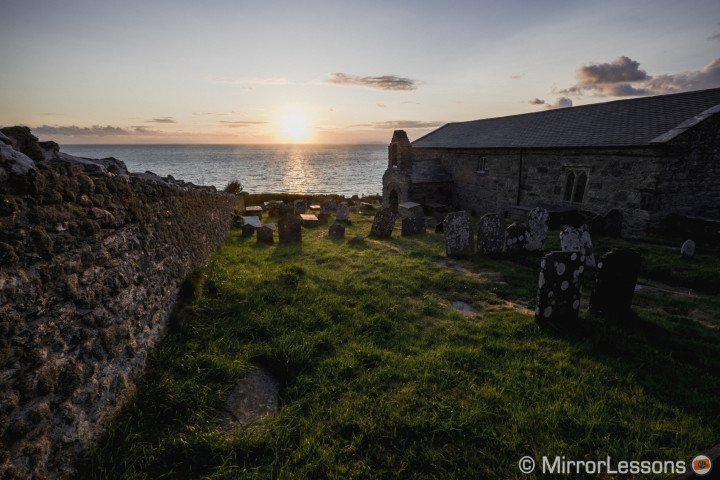
The nature of this lens and the f/4 constant aperture make it very difficult to achieve any kind of shallow depth of field. Personally, the idea has never even crossed my mind as the lens has been designed for other things. It has a minimum focus distance of 50cm that becomes 24cm when the macro mode is activated. I think it is a non-essential feature that you might end up using only a few times.
The maximum aperture of f/4 can be limiting in low-light conditions. We recently experienced this during a wedding where the house of the bride was dark with very little light coming in from the windows. I guess Fujifim designed it as an f/4 constant instead of f/2.8 to keep the size and weight down.
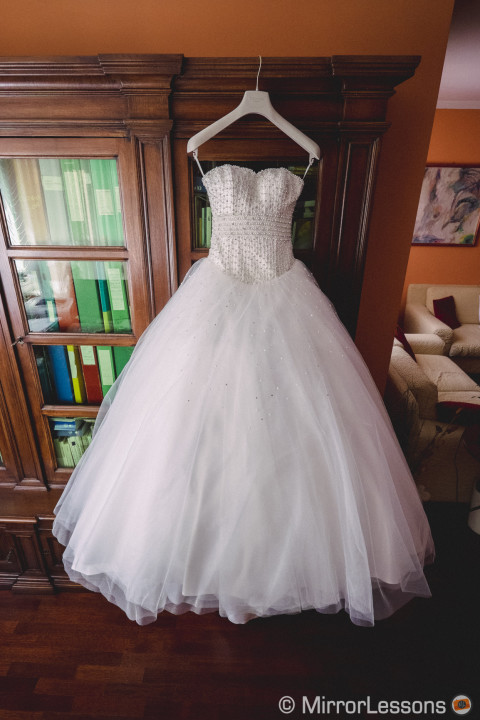
But this doesn’t mean that the lens cannot be used in low-light. This past summer I used it for start trails. Even though it would be more advisable to use a faster lens for this kind of photo, the result came out very well considering that there was also light pollution.

The autofocus works beautifully, proving itself worthy even for action shots. It can be a very interesting lens to use for sports when you want to have the viewer feel very close to the action. Adding a panning effect can add a hint of creativity too. Given the very long depth of field you will get all the time, it is also difficult to end up with an out-of-focus image, especially when used at f/5.6 or f/8.

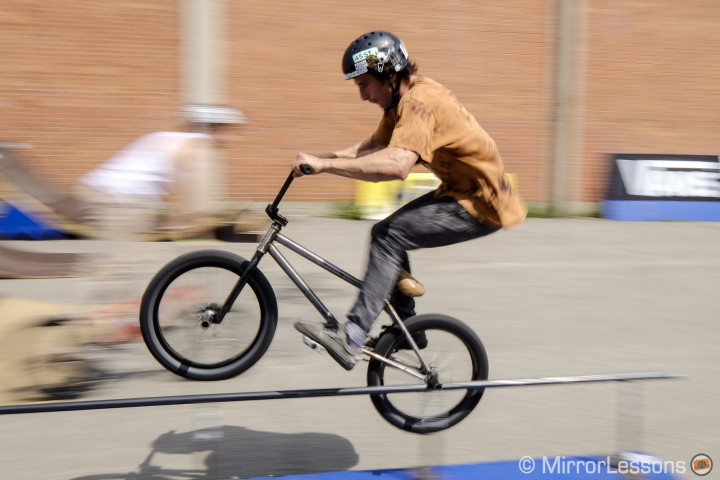
The inner focusing system is very silent. The lens also includes optical stabilisation and it works really well. I have to say that it is easier to get sharp results with slow shutter speeds combined with a short focal length as the micro shakes are less magnified compared with longer focal lengths. I managed to get very sharp images down to 1/4 of a second without having to retake any shots.

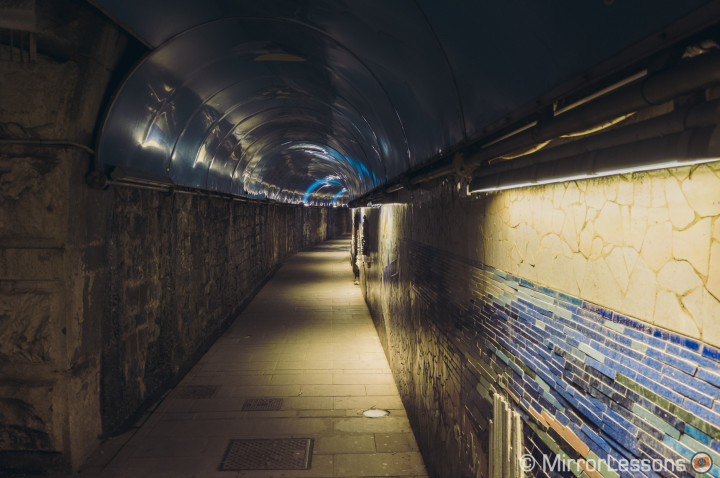
Conclusion
I couldn’t recommend the 10-24mm more highly to Fujifilm users who appreciate a versatile wide-angle lens for landscapes, architecture and other genres. While certainly bigger and slower than the XF 14mm f/2.8[], it is far more versatile and allows for further creativity. The image quality is also nothing short of impressive. The 10-24mm is perfect for many genres, and could easily become a lens that you keep mounted on your camera for various situations, while with the 14mm, I would inevitably feel the need to switch to a longer focal length on certain occasions.
What do you think of the XF 10-24mm f/4? If you’ve taken any shots with it, feel free to share them in our Google+ Community!

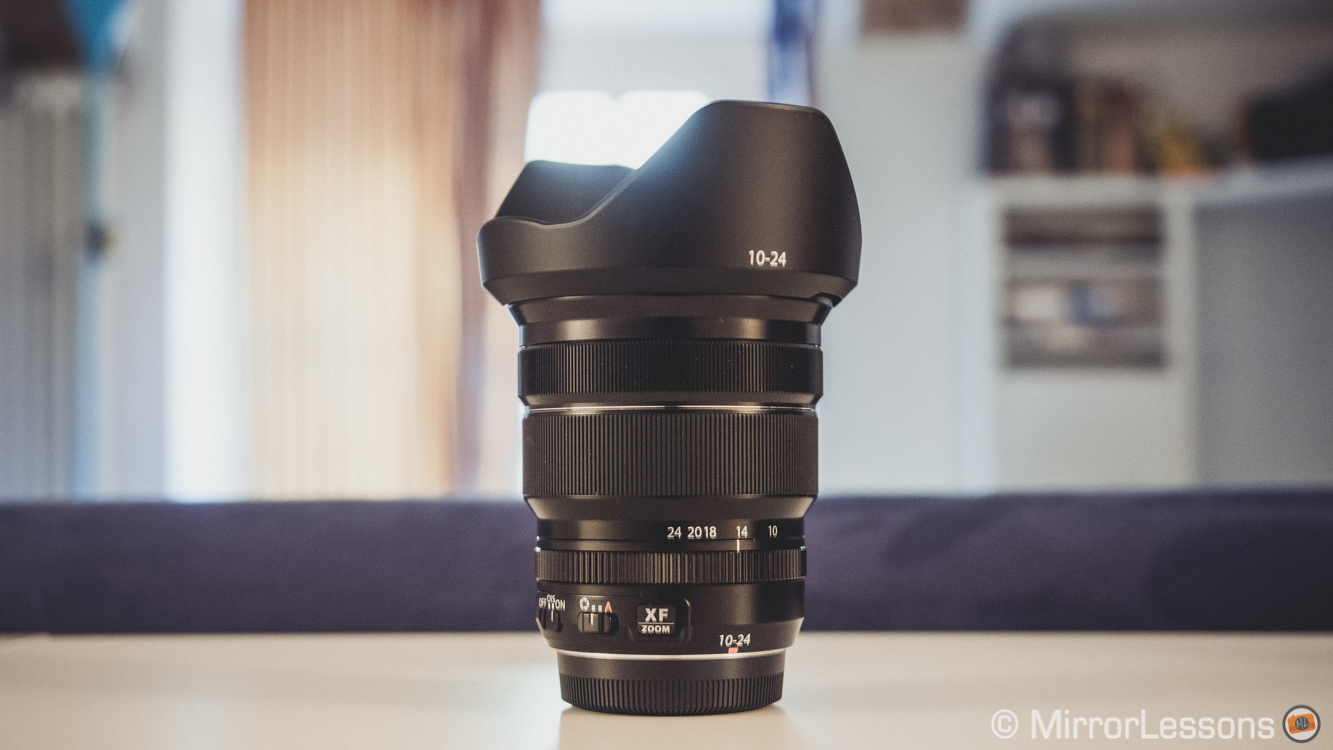
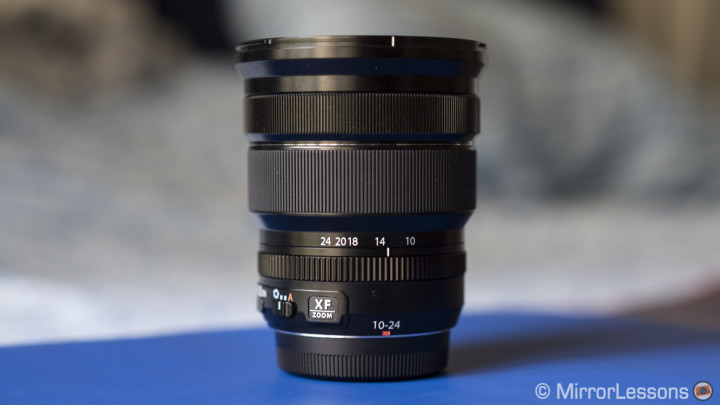
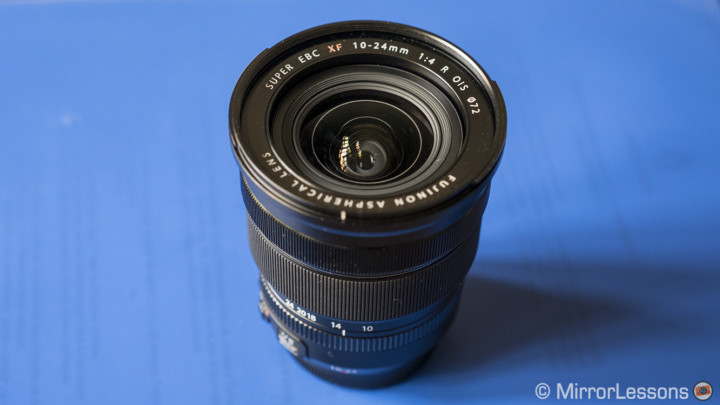
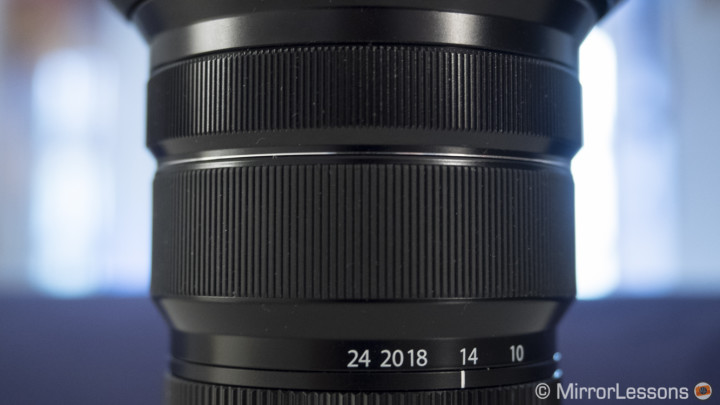
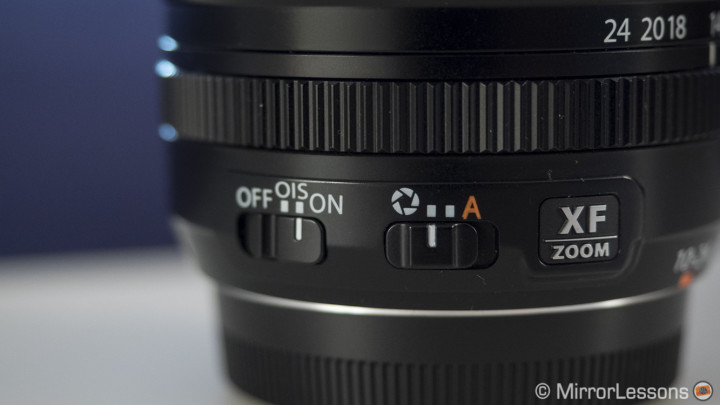





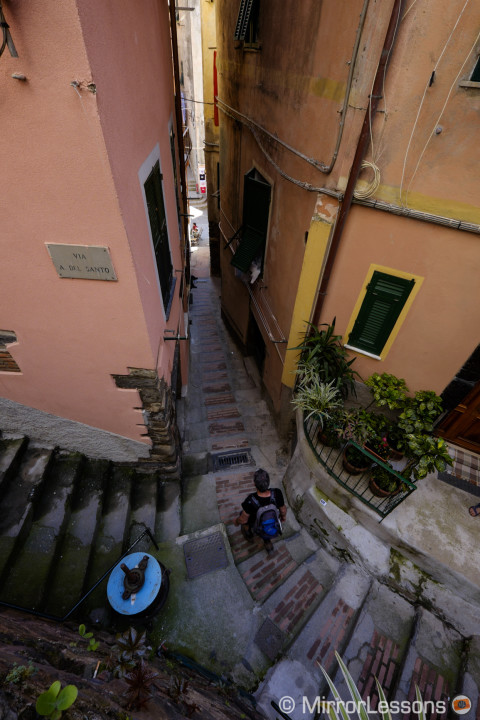





We don’t have the lens anymore. I suggest you ask in some Fuji forums or Fuji groups on Facebook, I am sure there are users that own the 10-24mm.
hi,
if is it possible i need full res images of xf 10-24 @10mm and @14mm
f4-5.6-8 comparison so that both focal length give the same view i.e you
have to adjust your position .i really need this comparison.hope fully
in boh raw and jpeg
In the case of the 10-24mm, the aperture is constant so it doesn’t change with the focal length.
I think the reason why the f-stops are not marked on the lens is because the ring controls the diaphragm, but the effective f-stop will vary with the focal length. So there is no set f-stop for a given position of the ring, it will vary when you zoom.
Thanks Zach. I haven’t noticed any vignetting with the 10-24 really, or at least nothing to worry about. Congrats on your new lens, happy that my review convinced you. You’ll forget your $1k expense once you start using it (I hope 😉
Actually, at least from what Lenstip says about the Fuji compared to what Photozone says about the Panasonic (Lenstip didn’t have a review for the Panasonic; too bad as they are one of my favorite technical lens review sites), Mathieu is partially correct. The Fuji does have less distortion at around 4.6% compared to the Panasonic at 5.2% (speaking of the raw, uncorrected distortion of course), but the vignetting of the Fuji is far worse at -1.93ev, while the Panasonic comes in around -1.2ev. This could be of concern to landscape photographers to be sure. That said, the software correction of the Fuji is pretty slick from what I’ve seen (don’t have the lens yet; just ordered it, strictly speaking from reviews I’ve read), and that is not just speaking about the 10-24. The auto correction of all their lenses across the board works well, and is generally applied automatically in LR and C1. I’ve read you can’t turn off the LR auto correction for correction data imbedded in raw files, but I don’t have experience with that as I stopped using LR some time ago. I can say that with C1, it corrects automatically based on raw data, but you can turn it off.
With resolution it is hard to tell which lens is better from the 2 reviews, but having used the Panasonic, I can testify it is quite sharp. I’m sure the Fuji is as well, and certainly the Lenstip review supports that, at least at the wide end.
Love to read your stuff Mathieu. Another good real-world take on a lens that you (in part) have convinced me to buy. So uh…thanks I guess…? (Cries as Amazon magically adds $1k to my already massive credit card debt…)
Cheers.
Actually, at least from what Lenstip says about the Fuji compared to what Photozone says about the Panasonic (Lenstip didn’t have a review for the Panasonic; too bad as they are one of my favorite technical lens review sites), Mathieu is partially correct. The Fuji does have less distortion at around 4.6% compared to the Panasonic at 5.2% (speaking of the raw, uncorrected distortion of course), but the vignetting of the Fuji is far worse at -1.93ev, while the Panasonic comes in around -1.2ev. This could be of concern to landscape photographers to be sure. That said, the software correction of the Fuji is pretty slick from what I’ve seen (don’t have the lens yet; just ordered it, strictly speaking from reviews I’ve read), and that is not just speaking about the 10-24. The auto correction of all their lenses across the board works well, and is generally applied automatically in LR and C1. I’ve read you can’t turn off the LR auto correction for correction data imbedded in raw files, but I don’t have experience with that as I stopped using LR some time ago. I can say that with C1, it corrects automatically based on raw data, but you can turn it off.
With resolution it is hard to tell which lens is better from the 2 reviews, but having used the Panasonic, I can testify it is quite sharp. I’m sure the Fuji is as well, and certainly the Lenstip review supports that, at least at the wide end.
Love to read your stuff Mathieu. Another good real-world take on a lens that you (in part) have convinced me to buy. So uh…thanks I guess…? (Cries as Amazon magically adds $1k to my already massive credit card debt…)
Cheers.
Thanks for that link – I think if I ever do ditch MFT, I’ll probably move to something like a Sony A7 instead of the Fuji system, but I’d need to see a true 14mm (or wider!) for it first. I don’t use filters and I almost always shoot at the widest end of an ultrawide. I *love* the distortion, so I’d probably miss the extra mm which makes such a huge difference at that extreme of the scale. I’d honestly trade my 7-14 for a smaller 7 rectilinear prime and never look back if they’d only make such a thing. It looks like when you put the 10-18 on a FF camera, not only can it only go down to 15mm, but you can’t really use the widest end of it without serious vignetting. http://briansmith.com/sony-a7r-10-18-e-mount-lens/ . If I want to shoot wide, but don’t want much distortion for whatever reason, I prefer my 15mm f/1.7
Recently bought this gem as well. I really like it. It will replace my Nikon 16-35 VR f/4 I use on my D700. That lens stays home to often, something I do not expect of this lens since it is much lighter and smaller.
The first results have totally convinced me about my choice. A very good lens indeed. It is a bit big on my E1 and E2, but not too much to be annoying.
Thanks for your nice review. Enjoyed it. One remark: why are the mm’s not mentioned under the photos. Certainly for a lens review these seem more interesting to me than the ISO setting. Both would be even better… 🙂
Patrick (Netherlands)
If it helps I did a comparison a while ago between the two with some image quality comparisons, field of view etc. Mathieu is right about the flaring, distortion and filters, but the 7-14mm at 7mm creates very dramatic pictures. Link is here – http://www.soundimageplus.com/soundimageplus/2014/03/fuji-10-24mm-compared-to-panasonic-7.html?q=FUJI%2010-24mm
My current W/A favourite is the Sony e-mount 10-18mm on an A7r. At 14mm there is virtually no vignetting. It may not be technically perfect but it sure grabs the attention, which is what I like to use these extreme wide-angles for.
I like the 7-14mm as well but to me the XF 10-24mm is better. Less flares and better distortion. And as @disqus_9uSnVi90yr:disqus pointed out, you can mount filters on the Fuji lens while it is not possible with the 7-14mm unless you buy an adapter.
I have the 10-24: really stunning lens! A bit heavy but very often mounted on my X-E2.
I had previously the Olympus OM-D EM-5 with the Panasonic but:
– the Fuji is imho much sharper
– the fuji can mount filters, the panasonic not. This thing alone made me switch
Great lens. I’ve had mine for a while. If I could answer the previous question, The Panasonic is a very good lens also, but those extra mm’s on the Fuji come in very useful.
How do you feel it compares to the Panasonic 7-14 for MFT?